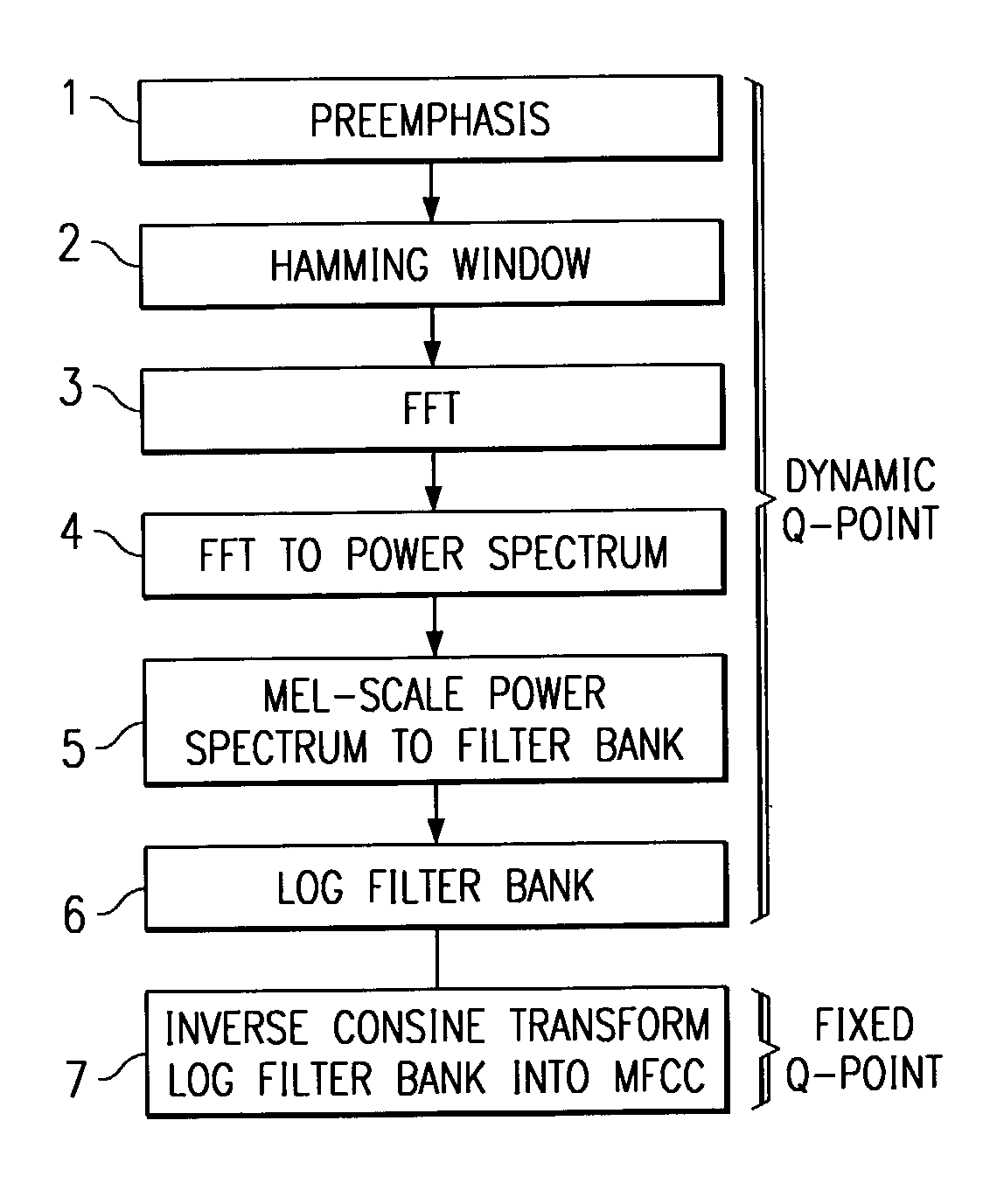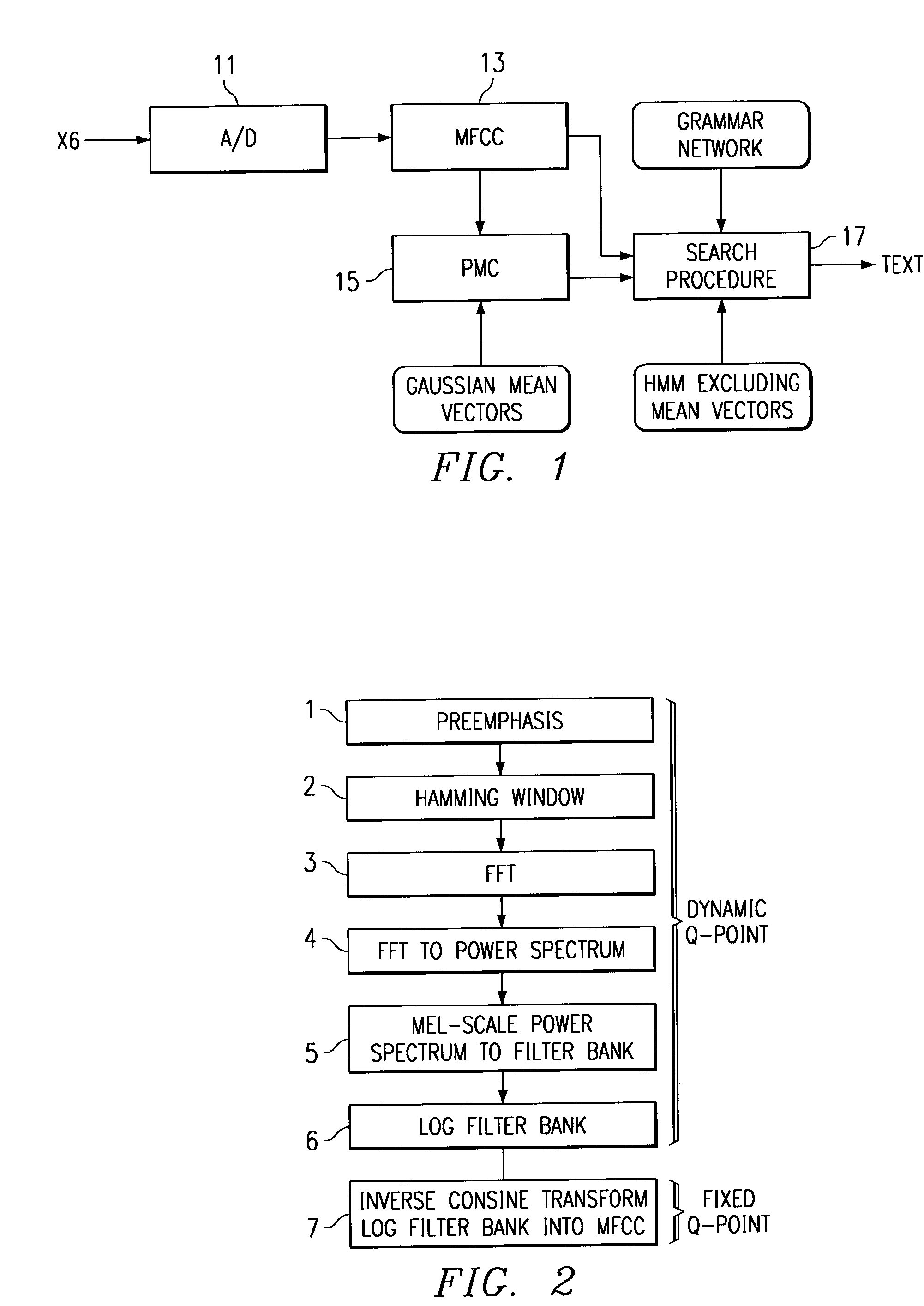Implementing a high accuracy continuous speech recognizer on a fixed-point processor
- Summary
- Abstract
- Description
- Claims
- Application Information
AI Technical Summary
Benefits of technology
Problems solved by technology
Method used
Image
Examples
Embodiment Construction
[0009] Referring to FIG. 1 the input speech xt is sampled at analog-to-digital (A / D) converter 11 and the digital samples are applied to MFCC (Mel-scaled cepstrum coefficients) front end processing 13 to extract speech features used for speech recognition. This is described in S. B. Davis and P. Mermelstein article entitled "Comparison of Parametrix Representation for Monosyllabic Word Recognition in Continuously Spoken Sentences" in IEEE Trans. Acoustic. Speech and Signal Processing; ASSP-28(4);357-366;August 1980. To enhance performance against additive noise, PMC (parallel model combination) 15 is integrated. PMC 15 is described in Technical Report F-INFENG / TR-135, Cambridge University Engineering Department, UK, 1993 by J. F. Gales and S. J. Young entitled "Parallel Model Combination for Speech Recognition and Noise". The MFCC and Gaussian mean vectors are applied to PMC 15. The features extracted in the noise are used to modify Hidden Markov Models (HMMs) to adapt the models to...
PUM
 Login to View More
Login to View More Abstract
Description
Claims
Application Information
 Login to View More
Login to View More - R&D
- Intellectual Property
- Life Sciences
- Materials
- Tech Scout
- Unparalleled Data Quality
- Higher Quality Content
- 60% Fewer Hallucinations
Browse by: Latest US Patents, China's latest patents, Technical Efficacy Thesaurus, Application Domain, Technology Topic, Popular Technical Reports.
© 2025 PatSnap. All rights reserved.Legal|Privacy policy|Modern Slavery Act Transparency Statement|Sitemap|About US| Contact US: help@patsnap.com



